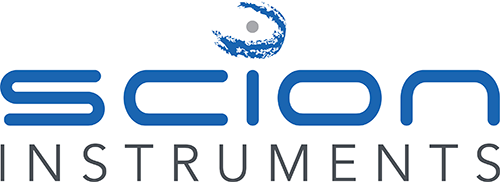HPLC Column Selection Guide
At SCION, we developed a detailed HPLC column selection guide to help you find the perfect column for your analytical needs.
Choosing the Right HPLC Column
Selecting the right column depends on several key factors, including your application market, base material, functional group, and separation mode. Therefore, understanding these elements is essential for achieving the best analytical results.
HPLC Separation Modes
Liquid Chromatography separates a mixture of compounds based on their physical and chemical properties, using a liquid eluent (mobile phase). High-Performance Liquid Chromatography (HPLC) enhances this process by applying high pressure, which results in faster and more precise separations. Since the interactions between the analyte, stationary phase (packing material inside the column), and mobile phase are crucial, choosing the right combination ensures successful separation.
There are different separation modes, and each can be achieved by selecting specific stationary and mobile phases.
Reverse Phase Chromatography (RPC)
- Separates compounds based on partition equilibration between the stationary and mobile phases.
- Uses a low-polarity stationary phase while the mobile phase has a higher polarity.
- Since the mobile phase’s polarity affects elution speed, a lower-polarity mobile phase allows for quicker elution.
- Typically, the mobile phase contains a mix of organic solvents (such as methanol, acetonitrile, or THF) and aqueous solvents (like water or buffer).
Normal Phase Chromatography (NPC)
- Also separates compounds through partition equilibration.
- However, it utilizes a high-polarity stationary phase, whereas the mobile phase has lower polarity.
- The mobile phase usually consists of organic solvent mixtures, such as hexane and isopropanol.
Hydrophilic Interaction Chromatography (HILIC)
- Separates compounds based on hydrophilic interactions.
- Unlike RPC, it uses a high-polarity stationary phase.
- The mobile phase typically contains a mixture of organic solvents (such as acetonitrile) and aqueous solvents (like water or buffer).
- Therefore, it is especially recommended for analyzing highly polar compounds.
Stationary Phases and Base Materials
For RPC, silica-based columns with C8 or C18 alkane chains are the most common. On the other hand, NPC and HILIC columns require more polar functional groups and different base materials. These may include polyvinyl alcohol, polyhydroxy methacrylate, styrene-divinylbenzene copolymer, or polymethacrylate. Because each application has unique requirements, selecting the right column depends on the specific target compounds and analysis goals.
Application-Specific Selection
Each industry has different chromatography needs, so column selection must be tailored accordingly:
- Pharmaceuticals: Reversed-phase columns are ideal for analysing small organic molecules and drug compounds.
- Environmental & Food Safety: Normal-phase or ion-exchange columns are more suitable, depending on the polarity of the compounds.
- Complex Mixtures: Since certain samples require greater precision, multidimensional HPLC setups combine different column types to enhance separation performance.
Thus, understanding your sample characteristics and separation requirements ensures accurate and reproducible results.
Get Expert Guidance
We have created a detailed guide to help ensure you choose the right HPLC column for your analytic needs – Scion-LC6000-Column-Selection-Guide-STG01 –.
